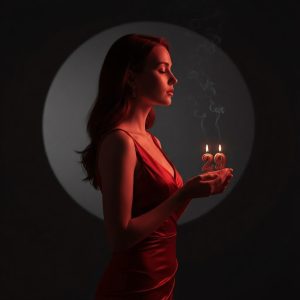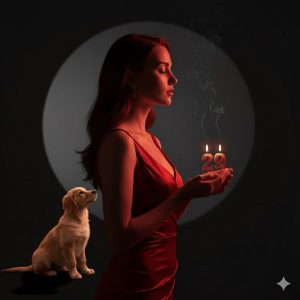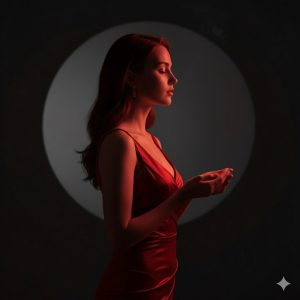Google’s latest advanced AI image generation and editing model, Nano Banana, features advanced language comprehension capabilities that make it easy to create fun, trending, and professional visual content. These tools include generating one-of-a-kind 3D figures, retro Polaroid photos, and virtual try-on effects.
Users can generate countless new creations from a single photo or blend scenes and combine ideas using multiple images. The following guide outlines specific categories and copy-and-paste prompt templates for leveraging the Nano Banana model to create stunning, professional-grade results.
Key Features of the Gemini Nano Banana Model
The Nano Banana model offers several key capabilities for high-fidelity image manipulation and creation:
- Photorealistic output: It excels at one-of-a-kind 3D figure creation with optimal realism, making it perfect for real-world design.
- Character consistency: Images can be edited or retouched while ensuring the consistency of the characters remains.
- Element changes: Users can easily swap elements in images, such as clothes, backgrounds, or hairstyles, through text-to-image generation.
- Advanced style transfer: The model can transform the style of an image while preserving the recognizable nature of the faces, characters, and scenes.
- Image combining: Multiple reference images can be combined into a single result while preserving identity consistency and details.
- Style and scene coherence: The model features advanced scene coherence and style reference, which aids in smooth storytelling and comic drafting.
I. Basic Editing Prompts
These prompts facilitate fundamental manipulations and enhancements of existing images.
1. Background Swap:
Replace the current background with a new scene (e.g., a serene sunset beach) while preserving the subject’s pose, details, lighting, and sharpness for a seamless, photorealistic result.
2. Add or Remove Object:
Add Object:
Add a new object (e.g., vintage red bicycle or golden retriever puppy) so it looks naturally part of the scene, matching the lighting direction, shadows, and perspective.
Remove Object:
Remove an unwanted item (e.g., trash can) completely and fill the empty area with natural background elements, ensuring the edit is seamless and invisible.
3. Camera Perspective Change:
Change the camera perspective to a specific view (e.g., Bird’s-eye view or Close-up portrait view) while adjusting the angle and composition to look natural.
4. Old Photo Restoration:
Repair and enhance damaged or faded photos by removing scratches, dust, stains, and noise, while restoring faded colors and enhancing contrast.
5. Edit Text in Image:
Modify, replace, or add specified new text (e.g., ‘Happy Birthday’) while maintaining the original font style, size, color, and alignment for seamless integration.
6. Object Extraction:
Isolate a specific subject or object (e.g., person, car, or animal) from the background, removing the background completely or making it transparent.
7. Enhance Image:
Sharpen details, improve colors and clarity, adjust lighting and contrast, and remove noise, keeping the composition natural and photorealistic.
8. Image Color Change:
Alter the color of a specified object (e.g., the car or the dress) while keeping all textures, lighting, and shadows intact.
9. Image Weather Change:
Transform the weather conditions (e.g., rainy, snowy, or foggy) while adjusting lighting, shadows, reflections, and colors to match the new weather realistically.
10. Image Element Replace:
Swap a specific item (e.g., old car) with a new one (e.g., modern sports car) while ensuring the new element matches the scene’s lighting, perspective, and shadows.
11. Image Outpainting:
Extend the edges of a photo to create a larger scene while maintaining the original style, perspective, colors, lighting, and textures.
12. Lighting and Shadow Changes:
Adjust illumination to achieve a specified effect (e.g., golden hour sunlight or dramatic low-light) without distorting original elements, enhancing the overall mood.
II. Portrait Retouching Prompts
These prompts focus on realistic modification of a person’s appearance and clothing.
1. Body Reshape:
Modify the subject’s body shape (e.g., slimmer waist, longer legs, or enhanced curves) while maintaining natural proportions and realistic anatomy, adjusting lighting, shadows, and contours.
2. Virtual Makeup:
Apply makeup (e.g., bold red lipstick or natural eyeshadow) while ensuring the cosmetics blend naturally with the skin tone, lighting, and contours.
3. Facial Expression Change:
Change the subject’s facial expression (e.g., smiling, surprised, serious, or laughing) while maintaining realistic skin texture and proportions.
4. Hairstyle Change:
Alter the subject’s hairstyle, length, or color (e.g., long wavy hair or platinum blonde) while ensuring the new style blends naturally with the head shape and lighting.
5. Gesture Adjustment:
Adjust the subject’s hand or body gestures (e.g., raise right hand, point left finger, or fold arms), maintaining realistic anatomy and proportions.
6. Virtual Clothes Try-on:
Digitally dress the subject in specified outfits (e.g., red evening gown or leather jacket) ensuring the clothes fit naturally with realistic folds, shadows, textures, and lighting.
III. Portrait Style Change Prompts
This category transforms portraits into unique formats or specific artistic styles.
1. 3×3 Photo Grid Pose:
Generate nine coordinated versions of a person or subject in different poses or angles, arranged in a grid, maintaining consistent facial features, clothing, and uniform lighting across all nine images.
2. 3×3 Grid Portrait:
Generate nine cohesive portrait variations showing different life experiences, angles, clothes, or minor styling variations, each placed in a unique setting with rich, colorful details.
3. AI Polaroid-style Couple Photo:
Creates an AI couple photo in the style of a Polaroid camera, with slight blur and consistent lighting, replacing the background with white curtains featuring a soft sky-blue gradient. (Requires two uploaded images).
4. Hug My Younger Self Polaroid:
Generates a cute polaroid picture of the older self hugging the younger self. (Requires two uploaded images).
5. AI Saree:
Transforms a photo into a cinematic, vintage-style portrait of the woman wearing a dramatic red chiffon saree, accurately matching the reference image’s face and body figure.
6. Cinematic Portrait:
Converts a regular portrait into a dramatic film scene, highlighted by intense cinematic lighting and sharp contrast, often captured from a subtle low angle.
7. AI Ghost Face:
Transforms a portrait into a dreamy 90s-style visual of the subject holding a large 90s corded phone on satin bedding in a dimly lit room, with the iconic Ghostface mask from Scream looming in the background.
IV. Creative Design Prompts
These prompts cater to artistic, product design, and specialized creative applications.
1. 3D Chibi Proposal Scene:
Transforms subjects into 3D chibi-style characters with oversized heads, placing them in a romantic proposal setting (e.g., a moonlit garden) with polished 3D art style.
2. Action Figure and Real Person in the Same Frame:
Creates a casual shot featuring a miniature action figure version of the subject in a dynamic pose near the corresponding real person in the same frame.
3. Knitted Doll:
Turns an uploaded photo into a lifelike, handmade-style knitted or crocheted doll version, complete with realistic yarn textures, button-like eyes, and soft stitches.
4. Custom Anime Figure:
Transforms a photo into a highly detailed, collectible-style anime figurine (e.g., a 1/7 scale commercialized figure) placed on a computer desk, next to packaging.
5. Game UI:
Generates a complete, high-resolution game user interface (UI) design (including menus, buttons, and icons) inspired by the image’s colors and mood.
6. Perspective 3D Pop-Out Effect:
Transforms a flat photo into a dynamic, hyperrealistic bird’s-eye view scene where the main subject appears to rise dramatically from a smartphone screen.
7. Social Media Frame Integration:
Creates a 3D chibi-style character interacting with a giant Instagram frame, making a finger heart gesture, complete with social media icons.
8. Cute Chibi Keychain:
Generates a close-up shot of a vibrant, adorable chibi-style keychain (made from soft rubber with thick black outlines) held in a person’s hand.
9. RPG-Style Character Card Creation:
Designs a vibrant 3D cartoon-style collectible character card of the subject as a specific profession, including skill stats, title banners, and a themed background.
10. Ultra-realistic 3D Game:
Creates an ultra-realistic 3D render faithfully replicating a character in a detailed, themed 3D game environment (e.g., a dim, cluttered 2008 bedroom).
11. Famous Painting Character OOTD:
Generates a Q-style 3D C4D-rendered character based on the person in the photo, dressed in a fashion-forward “outfit of the day” (OOTD) inspired by a specific profession.
12. Funko Pop Figure Creation:
Converts a person into a Funko Pop-style chibi figure, displayed both inside an isometric packaging box and as a standalone 3D rendering.
13. AI Interior Design:
Visualizes and redesigns a room by adding or removing specified furniture while matching a contemporary style.
14. Anatomical Illustration:
Creates a bilaterally symmetrical frontal anatomical illustration of a character, designed like an infographic, revealing external and internal anatomy, complete with detailed explanatory text.
15. Ingredient Display:
Creates a step-by-step recipe infographic for a specified dish in a minimal, top-down style on a white background, labeling ingredients and showing process steps.
16. Fake Tweet Screenshot:
Creates a hyper-realistic Twitter post screenshot, specifying the character, behaviors, environments, and optionally including a selfie and visible likes from another character.
17. Japanese-style Two-Panel Manga:
Creates a two-panel vertical manga in a cute Japanese anime (moe-style) style, transforming the uploaded person while preserving key details and outlining a theme (e.g., [Journey]).
18. Line to Image:
Transforms line art or sketches into a fully colored, detailed image, applying a specified style (e.g., photorealistic) with realistic lighting and textures.
19. Image to Ghibli Style:
Transforms the scene and characters into a Studio Ghibli-inspired animation style, emphasizing soft, whimsical colors, delicate lighting, and painterly textures.
20. Three Animals Selfie at Landmark:
Creates a highly detailed, realistic-cartoon-style close-up selfie of three specified animals displaying varied expressions in front of a famous landmark (e.g., Brandenburg Gate).
21. Extremely Ordinary iPhone Selfie:
Generates an image with an extremely ordinary and unremarkable feel, resembling a random snapshot with slight motion blur, awkward angles, and uneven lighting.
22. Tattoo Simulator:
Blends a specified tattoo naturally onto a body part (e.g., below the clavicle), maintaining proper perspective, realistic skin texture, shadows, and highlights.
23. Multiple Images Morph into One:
Extracts key elements (e.g., the woman, the car, the bridge) from uploaded images and morphs them into a single, seamless, high-resolution image.
24. Time-Based Image Generation:
Creates an image of the same scene, depicting what will happen (e.g., demolished) at a specified time (e.g., 10 minutes later), incorporating natural changes over time.
25. Movement Control Based on Annotation:
Allows characters in uploaded images to interact by following a specific gesture depicted in a third reference image, adding a rich visual background and atmosphere (e.g., romantic).
26. Drawing to Image Based on Annotation:
Generates a specified image type (e.g., YouTube thumbnail) for a hand-drawn image using modern fonts and a specified style (e.g., cartoon or real-life).
27. Comic Storyboard:
Generates a nine-panel, black-and-white comic based on the image content, using visuals and camera angles to convey a complete story.
28. Product Internal Structure:
Creates an ultra-detailed exploded view of a product, showing metallic parts and electronic components floating in mid-air with a futuristic technology aesthetic.
29. AR Landmark:
Acts as a location-based AR experience generator by highlighting a specified point of interest in the image and annotating relevant information about it.
How to Use the Nano Banana Gemini AI Photo Prompts
These Nano Banana prompts can be copied and pasted into an AI image generator that integrates the model.
Two recommended methods are:
- Google AI Studio / Gemini: Sign in to Google Gemini, switch to the Gemini 2.5 Flash model, and select “Create images,” or sign in to Google AI Studio and select the Nano Banana model. These platforms are suited for high-quality, complex, multi-step results, offering more realistic details, lighting, and resolution.
- Clipfly: Go to the Clipfly AI image generator and select an image generation mode (Text to Image, Image to Image, or Element Reference to image). Clipfly is useful for fast, simple image creation and quick edits.






 Facebook
Facebook
 LinkedIn
LinkedIn
 X
X
 Reddit
Reddit